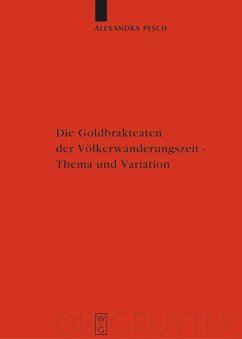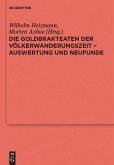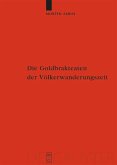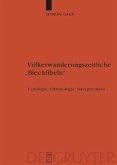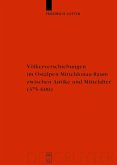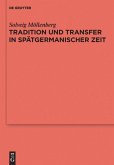In the predominantly non-literate culture of migration period Germania gold bracteates were an authentic statement of the identity of those who wore them and of how they saw the world. Their standardised programme of designs demonstrates that they were all produced according to strict, common rules governing motifs and style. The fact that the designs were diffused by a process of copying allows us to reconstruct a network of interrelations between central places, so that bracteates are one of the primary sources for research into early medieval Germanic society.
In der weitgehend schriftlosen Germania der Völkerwanderungszeit waren Goldbrakteaten authentischer Ausdruck der Weltanschauung ihrer Trägerinnen und Träger. In den Verbreitungsgebieten zwischen Norwegen und Ungarn, England und Polen, vor allem aber in ihrem skandinavischen Kerngebiet, wurden sie verwendet von den Eliten der germanischen Welt: als Ehrenzeichen, Priesterinsignien, Propagandamaterial und/oder Schmuck hochrangiger Frauen. In diesen Amuletten und ihren Bildern drückte sich germanisches Selbstverständnis gegenüber dem Imperium und anderen Nachbarn aus. Trotz der dezentralen Produktion belegen die standardisierten Bildprogramme, dass alle Hersteller sich gleichen Regeln der Motivik und des Stils unterworfen haben. In einem so weiträumigen Gebiet und in einer Gesellschaft, die als lediglich durch kleine, konkurrierende Gefolgschaften gegliedert gilt, überrascht diese Kanonisierung. Denn indem die Brakteaten durch Kopierprozesse verbreitet wurden, ist ein netzwerkartiges Zusammenspiel der Eliten in den Zentralplätzen nachweisbar, das auf eine überregional wirkungsmächtige Direktivenstruktur schließen lässt. Dies macht die Brakteaten zu wichtigen Primärquellen für die Erforschung der frühmittelalterlichen Germania.
In der weitgehend schriftlosen Germania der Völkerwanderungszeit waren Goldbrakteaten authentischer Ausdruck der Weltanschauung ihrer Trägerinnen und Träger. In den Verbreitungsgebieten zwischen Norwegen und Ungarn, England und Polen, vor allem aber in ihrem skandinavischen Kerngebiet, wurden sie verwendet von den Eliten der germanischen Welt: als Ehrenzeichen, Priesterinsignien, Propagandamaterial und/oder Schmuck hochrangiger Frauen. In diesen Amuletten und ihren Bildern drückte sich germanisches Selbstverständnis gegenüber dem Imperium und anderen Nachbarn aus. Trotz der dezentralen Produktion belegen die standardisierten Bildprogramme, dass alle Hersteller sich gleichen Regeln der Motivik und des Stils unterworfen haben. In einem so weiträumigen Gebiet und in einer Gesellschaft, die als lediglich durch kleine, konkurrierende Gefolgschaften gegliedert gilt, überrascht diese Kanonisierung. Denn indem die Brakteaten durch Kopierprozesse verbreitet wurden, ist ein netzwerkartiges Zusammenspiel der Eliten in den Zentralplätzen nachweisbar, das auf eine überregional wirkungsmächtige Direktivenstruktur schließen lässt. Dies macht die Brakteaten zu wichtigen Primärquellen für die Erforschung der frühmittelalterlichen Germania.
"While detailed interpretations of the bracteate iconography continue to be debated, Pesch's results are highly significant, providing a concrete and much-needed study of the production and perception of decorated metalwork in the early Middle Ages. In particular, the in-depth dircussion of the mechanisms behind the copying of artwork deserves wide attention."
Märit Gaimster in: Journal of Medieval Archaeology, 54/2010
Märit Gaimster in: Journal of Medieval Archaeology, 54/2010

